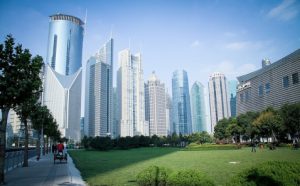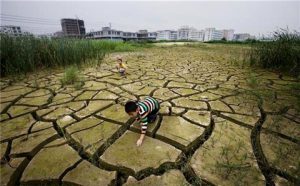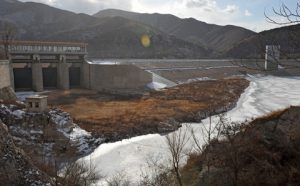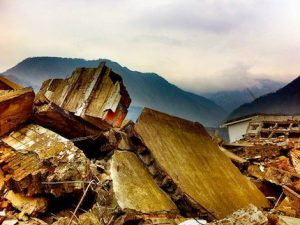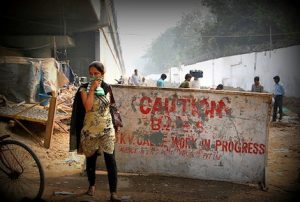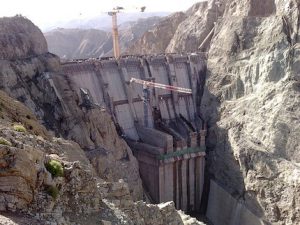Tom Levitt (TL): Why do you see China as having more of a resource squeeze than anywhere else?
Damien Ma (DM): China’s default setting is resource scarcity. Take something like water where it has 7% of the world’s fresh water sustaining 20% of humanity. Now I’m living in Chicago, which as many people know sits on Lake Michigan, which itself is part of the Great Lakes. Lake Michigan is 4% of the world’s freshwater alone. The Great Lakes are 20% of world freshwater that sustains only 4.5% of the global population. So the United States is sort of the exact opposite of China in terms of resource scarcity.
TL: Do you see water as the number one scarcity issue then?
DM: Yes, because water is in everything. And as China urbanises at a much faster pace than it has been you’re going to have 250 million more urban residents in the next decade. They’re going to be competing with the agricultural and industrial sectors for water. So, how do you sustain all of that? On an increasingly sort of shrinking resource base, not to mention the fact that pollution has caused a lot of the existing water to be unusable without being cleaned up. How you allocate water fairly and efficiently and how you ensure that input is going to be sustained with what China wants to do on so many fronts is, I think, a huge challenge.
TL: What policies are being implemented to tackle scarcity issues, particularly around water?
DM: I think there has been debate certainly in some wealthier coastal cities about pricing water a little bit higher to manage demand. Technology can certainly help. Water recycling is a huge focus of the Chinese government and that could certainly help more efficient use of scarce resources. China has focused so much on the supply-side because it has been a supply-side economy. When you switch that model to a more consumption-sided one, then I think logically you have to do more demand-side management.
TL: There’s also been a lot of talk about food and China. Could Chinese demand potentially disrupt global markets?
DM: China has done a spectacular job of ensuring food security, but I think it’s going to become more of a challenge for it to maintain its food security policy, which is 95% self-sufficient. When you urbanise, you create more middle class and higher income, which is translated into different diets. Chinese meat consumption is now 60% more than the US. On per capita term, of course it’s smaller, but you can see that it is just going up. So similar to other sorts of commodities like coal or natural gas, food is, in commodity terms, heating up as a growing middle class demands more meat, more proteins and a different diet. All of that is going to require inputs, just like coal is an input into industry, so the input to food is soya beans and corn. And that’s going to be imported, which could potentially have an impact on global prices.
That’s not to say China is going to seriously disrupt the global food market, because to do that I think China would have to seriously let go of its food security policy. But even if it just makes marginal changes that will have an impact. Take for example coal, which is the only thing China has in abundance so it uses a lot of it. Starting in 2009, China became a main importer of coal. The import was only about 10% of total consumption and production, but it had a huge impact on the global market because even that amount was a huge driver of seaborne coal trade.
TL: How much awareness is there about resource scarcity amongst Chinese policymakers?
DM: When we told Chinese officials that we wrote an entire book on scarcity they just chuckled and said, we deal with scarcity every single day, that’s how we see our country and how we define some of our policies. Most Western audiences tend to focus on natural resource scarcity, but they don’t think about the other components of sociopolitical and institutional deficits in that way. How economic scarcity manifests in sociopolitical dynamics as well and how that feedback loop goes back to economic constraints as well.
TL: What impact do you think geographical differences in resources in China will have domestically?
DM: China is just as regionally diverse as the US or any other continental-sized country. And the South-North water diversion is one clear manifestation of how policymakers are dealing with it. They want to transfer water from areas of abundance to places of scarcity, which is the north. However, they’re doing that in a different era to when they built the Three Gorges Dam. When they did the dam, there was not so much push back. There was not so much information, there was no internet and there was a much smaller middle class. Now you have all those things present in China, middle class, information and a more sort of hostile public. There is also a growing environmentalism and nimbyism happening in China. I could see a scenario where people in Shanghai will say, Why are we losing our water to Beijing and not being compensated for it? So we’ll see how that plays out. There are certainly new factors in Chinese society and politics right now that can make this project, or any mega engineering project, tougher than 10 or 15 years ago.
TL: So can the demands and aspirations of the growing middle classes be met?
DM: One point we make is that there are pretty stark contrasts in society right now, with a rural-urban divide and an urban-urban divide, with the migrants who have flooded to the city since the mid-1990s. Many of them are a younger generation and they all want to stay. They have very similar aspirations to the current urban residents who hold resident permits. So you’ve got these sort of second class citizens within the cities that have the same aspirations; they want the car, they want the house, but they are not entitled to all these services. This inequality was imposed from a different era to control population movement as a social stabiliser. Now this policy will seem to be increasingly unattainable because it doesn’t feel like a social stabiliser anymore. If anything it can generate more social tensions within the cities. So that policy has to be changed to release that social pressure and equalise opportunities for a lot of people. Now add in the scarcity factor, urban residents are already competing for education and house care that are insufficient. Do they really want to have 250 million migrants become urban residents? Fighting for the same scarce resources? That’s going to be very political and socially contentious.
TL: Do you think scarcity will constrain China’s growth?
DM: They have to change a lot of their current attitudes in terms of domestic self-sufficiency across a range of different things. They used to have a domestic self-sufficiency policy on energy, but that got thrown out of the window in 1993 when they became a net oil importer. Now they’ve got a 60% dependency on imports, which is a huge change in just 20 years. If China is willing to trust the global market a little bit more, I think that could potentially solve some of its scarcity.
One good thing about China is that it’s not afraid to be an experimental ground for leading cutting edge technologies on the energy and resource side. They’re a number of things they can do that could at least, if not completely eliminate scarcity, certainly help manage and mitigate it in a way that could help sustain their development. So, this is I think the big question that we probably don’t answer completely, because I think the jury is out, but it will be a combination of all these different factors, policy, technology and being more willing to rely on global market and so on, that’s going to help manage the scarcity issue.
TL: Are there enough resources in the world for China to switch to a consumption based economy?
DM: Well, you have to assume that they want to aspire completely to an American level of consumption which is fairly wasteful. I don’t think that the Chinese are trying to follow the US model in that sense, which I think is probably a smart thing to do. But again, you know, it’s hard to say. You can’t control people’s aspirations and consumption behaviour too much and I have no idea if Chinese per capita consumption is going to go up to five or ten times what it is today. It’s potentially a scary thing to think about.
Damien Ma is a fellow at the Paulson Institute and author of ‘In line behind a billion people: how scarcity will define China’s ascent in the next decade’
